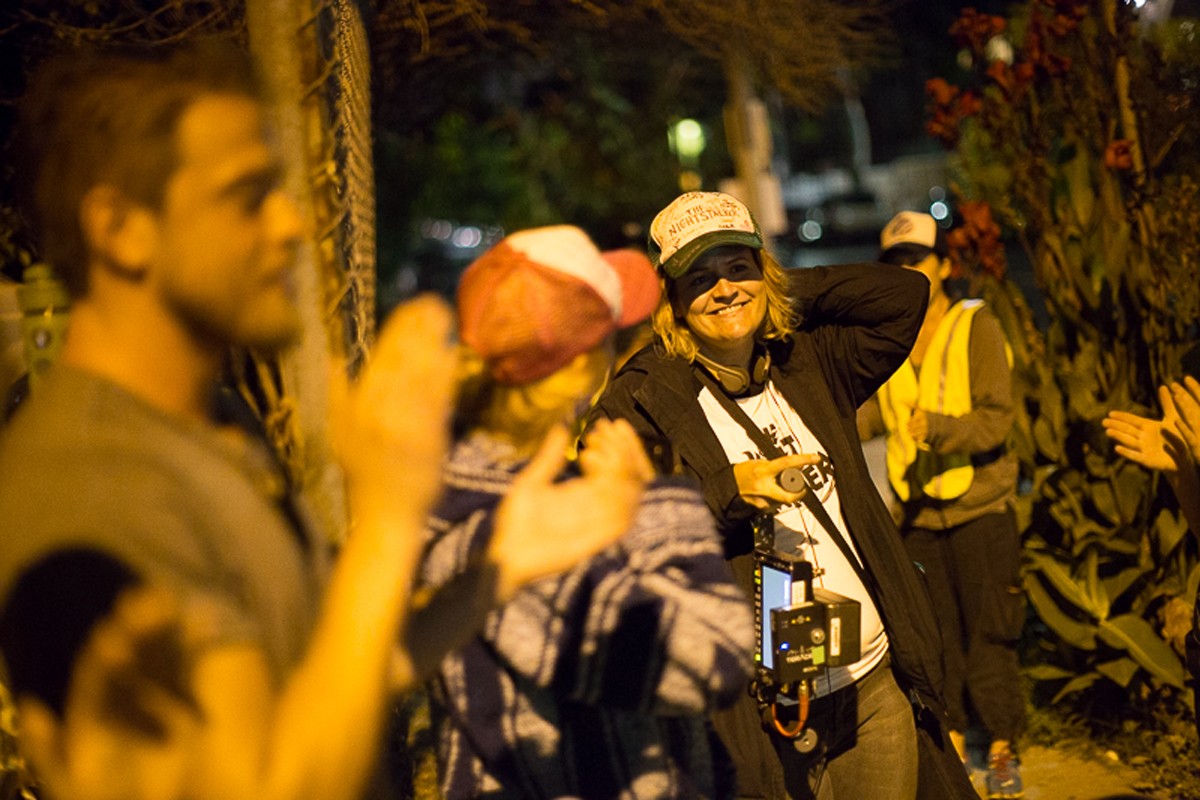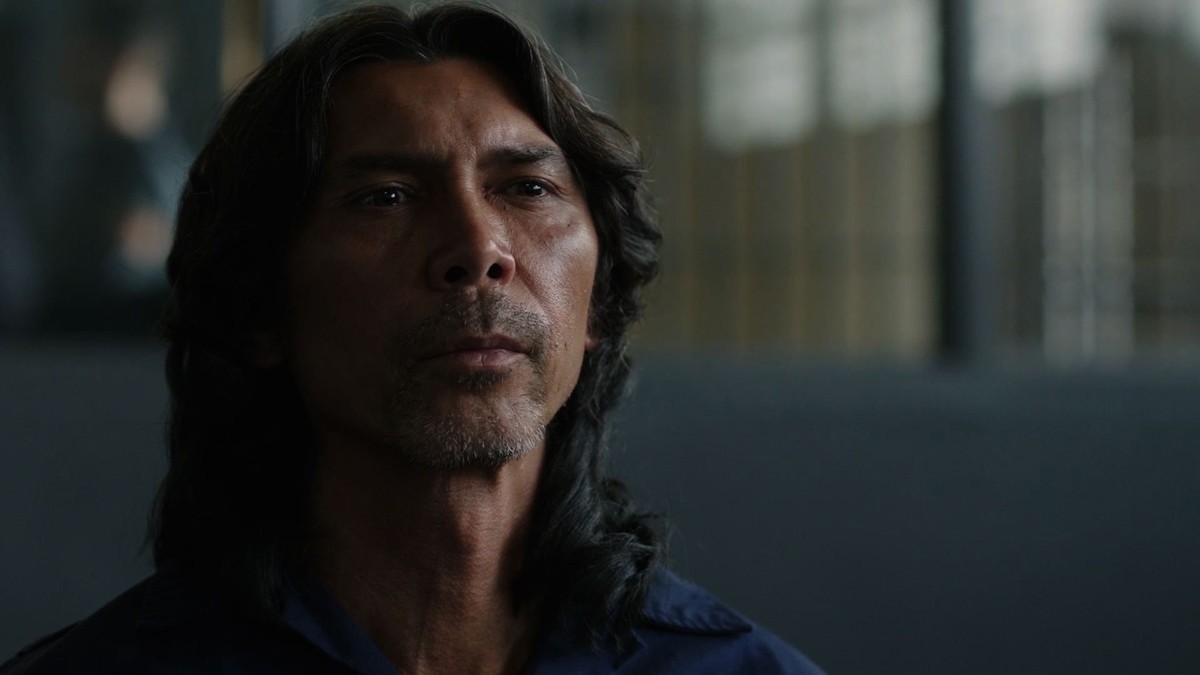
In 1985, Megan Griffiths was 10 and living in Riverside, and like all Southern Californians at the time, she vividly recalls the serial killer on the loose whom the media dubbed “The Night Stalker.”
Even in sweltering summer heat, people across the region closed and locked their windows at night after frothing anchormen warned the brutal rapist and killer entered the open windows and unlocked sliding doors of homes from Whittier to Monterey Park, from Arcadia to Diamond Bar.
Speaking from the city in which her movie The Night Stalker premieres during the Seattle International Film Festival on Saturday, writer/director Griffiths says she tapped into the anxiety she and millions of others battled because of drifter Richard Ramirez. “One of the things that drew me to the project was how much I feel that time period affected my life, the idea we all have that someone or something is responsible for our brush with fear and first exposure to true darkness in the world,” Griffiths says. “I credit Ramirez for that with me.”
The project was sparked after producer Alisa Tager gave Griffiths a copy of Philip Carlo’s nonfiction book The Night Stalker: The Life and Crimes of Richard Ramirez. But the film, which will only be shown on big screens in Seattle and Santa Ana before appearing June 12 on cable television’s Lifetime network, is a fact and fiction “hybrid,” Griffiths says.
Bellamy Young, who plays first lady Mellie Grant on ABC’s Scandal, stars as an attorney who travels to San Quentin to convince Ramirez (Lou Diamond Phillips) to confess to a Texas murder that unjustly landed her client on death row. Ramirez was born in El Paso, but he received no such visit. Young’s fictional character, Kit, “was designed as a bit of a parallel to Ramirez’s story,” Griffiths explains.
“The same way he was damaged by his life and the people around him as a kid, she, in turn, is really damaged,” she says. “[Kit] grew up in Southern California and was 15 at the time of the crimes. The fear and fascination of it shaped her. The idea is he sort of brings trauma forward in a whole different person. I’m sure [the real Ramirez] had that effect on several people in Southern California, indirectly, beyond the people who were actual victims.”
Her goal was to avoid simply portraying the avowed Satanist serial killer as a one-dimensional “monster.”
“Ramirez was incredibly damaged by the things that happened to him in childhood and his teenage years,” Griffiths says. “Influences for him destroyed a once-innocent young boy. None of it excuses anything he did, but it is a cautionary tale. People can really be destroyed, and we’re all sort of culpable.”
While no evidence has been produced to link Ramirez to Texas murders, some do believe he killed more than the 13 victims who earned him accommodations on California’s death row in November 1989. Ramirez—who famously told reporters covering his sentencing, “Big deal. Death always came with the territory. See you in Disneyland”—later suffered complications from B-cell lymphoma and died in 2013.

He’d been caught after driving a stolen Toyota from LA to Mission Viejo on Aug. 24, 1985, when he broke into the house on Via Zaragosa of Bill Carns and his fiancée, Inez Erickson, who were sleeping. Ramirez awakened then-30-year-old Carns when he cocked his .25-caliber handgun, which was used to put three bullets in the victim’s head. Ramirez then forced Erickson to swear she loved Satan, beat her, bound her, dragged her to another room, raped her, sodomized her and robbed her. As Ramirez left, he told Erickson, “Tell them the Night Stalker was here.”
The two survived their injuries, even though one bullet could not be removed from Carns’ head. When news of the attack spread through the neighborhood, then-13-year-old James Romero III told his parents he had seen a “weird-looking guy in black” earlier in the night and, thinking he was suspicious, wrote down the part of the Toyota license plate he could make out in the dark. Romero’s parents contacted police; the stolen car was found Aug. 28 in LA’s Wilshire District, and a fingerprint on the rear-view mirror was linked to Ramirez, who had a long rap sheet despite being only 25. That led to the release of his mug shot.
Griffiths shot flashback scenes of Ramirez’s Aug. 31 capture on Hubbard Street, the actual East Los Angeles neighborhood whose back yards he ran through after being spotted and tried to carjack a woman whose screams were heard by Jose Burgoin. He ran over and pulled Ramirez out of the Ford Mustang, and then was joined by the woman’s husband, Manuel De La Torre, who conked Ramirez on the head with a steel rod before the Night Stalker ran off. Burgoin yelled for his two sons, who chased Ramirez, pulled him down and held him until police arrived. Their father has since died, but Julio and Jaime Burgoin still live in the same Hubbard Street house, and Griffiths used them as extras in those scenes.
“The neighborhood was really excited; they were really happy to be there,” Griffiths says of the shooting day. “We had to clear the street [of cars] so it looked like 1985, but one neighbor let us use his Mustang [that Ramirez tried to steal that day]. … It’s cool to have that kind of history in the film.”
It did strike her funny that so many in the neighborhood lined up for photos of Ben Barrett, the actor who plays the younger Richard Ramirez. Barrett, Griffiths and retired Los Angeles County sheriff’s homicide detective Gil Carrillo, who was the first to put cuffs on the Night Stalker, are scheduled to participate in a Q&A with the audience after the Orange County premiere screening at 7:30 p.m. Friday, June 10, at the Frida Cinema in Santa Ana.
Given the OC and East LA connections, Griffiths believes the Frida is the perfect venue for her film that rolls there June 10 to 16. “The whole week of screenings is really about bringing audiences a deeper appreciation for this movie,” she says, “because they have their own personal stake in it.”
Estimating that half of her crew of 113 for The Night Stalker was women and/or minorities, she is donating Santa Ana proceeds to a nonprofit foundation that aims to get more women behind film and television cameras. “We made an effort to consider gender and ethnic diversity in hiring, and we ended up with an amazing, talented and driven crew,” Griffiths says, “so it was good.”
The Night Stalker was written and directed by Megan Griffiths; produced by Matthew R. Brady, Alisa Tager, MRB Productions and Laboratory Productions; and stars Bellamy Young, Lou Diamond Phillips, Mark Kelly and Ben Barrett. At the Frida Cinema, 305 E. Fourth St., Santa Ana; thefridacinema.org. Premieres Fri., June 10, 7:30 p.m. (with Q&A after featuring Griffiths, Barrett and Carrillo) and 9:30 p.m. Sat.-Thurs., June 11-16, 8 p.m. $8-$10. Also, June 11., 9 p.m. and June 13, 1 a.m. on Lifetime and June 17, 8 p.m. and June 18, midnight on LMN (formerly Lifetime Movie Network).


One Reply to “Mission Viejo’s Closeup in The Night Stalker”